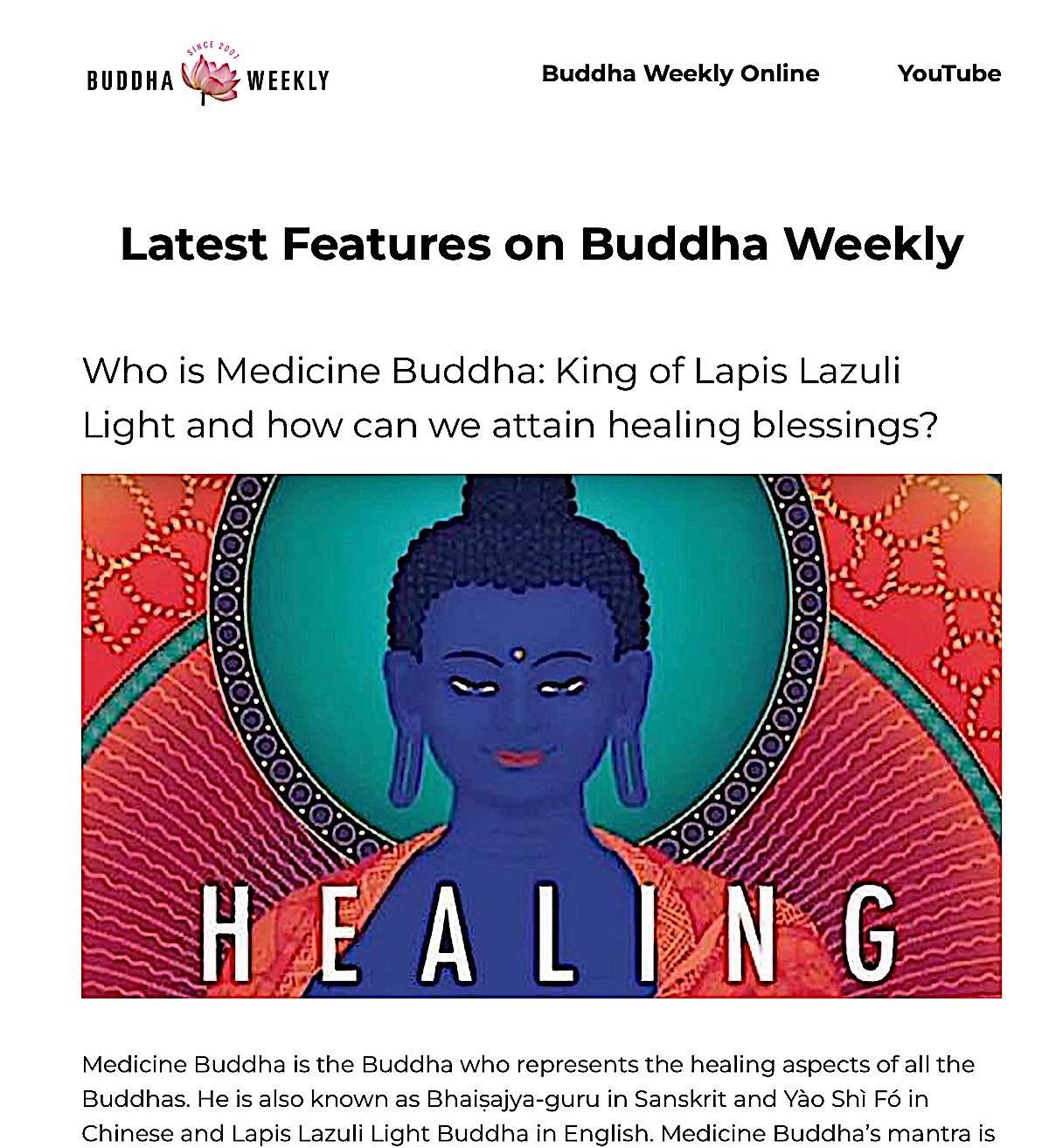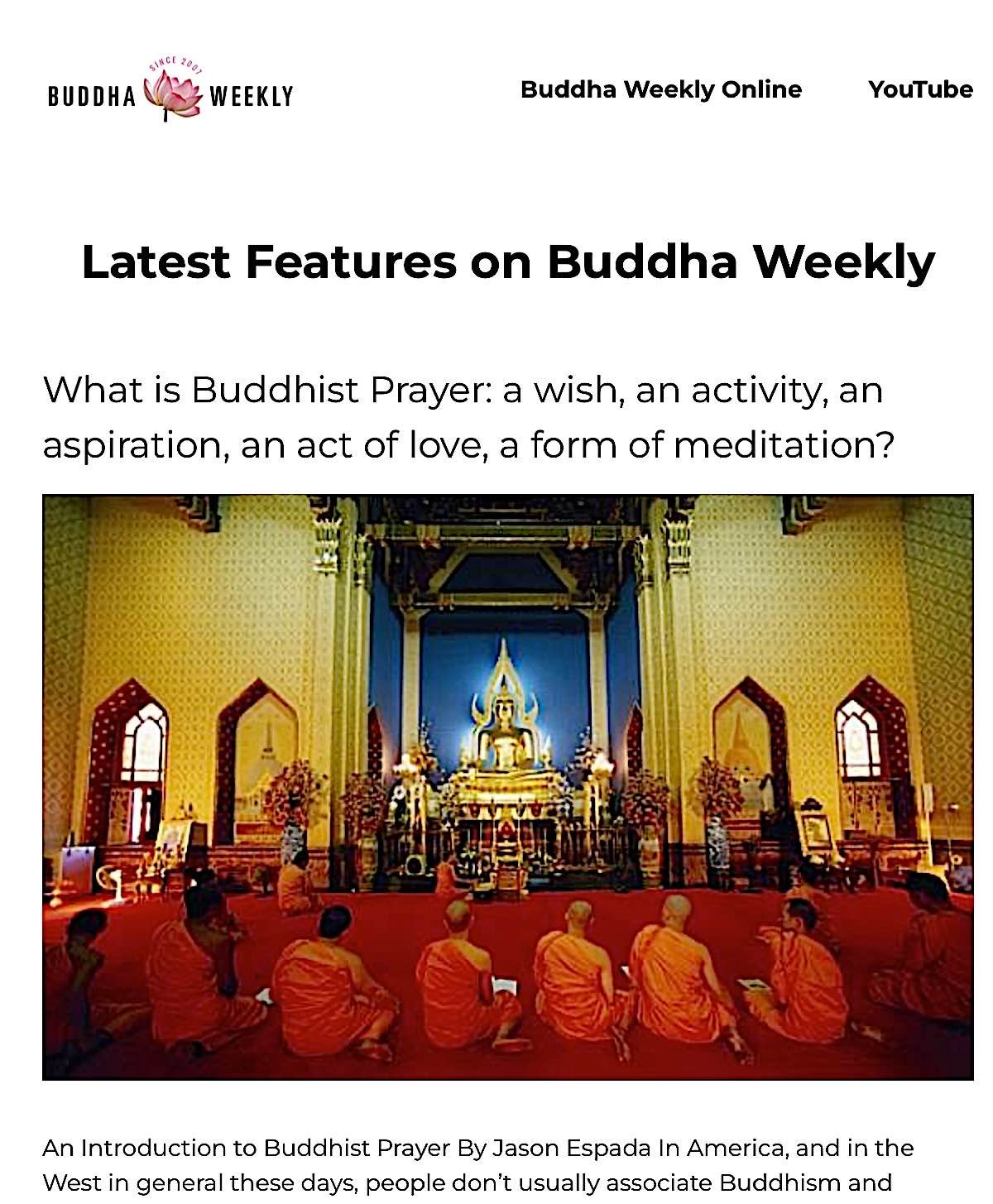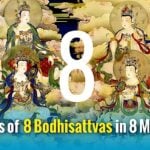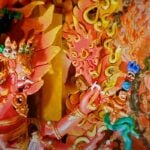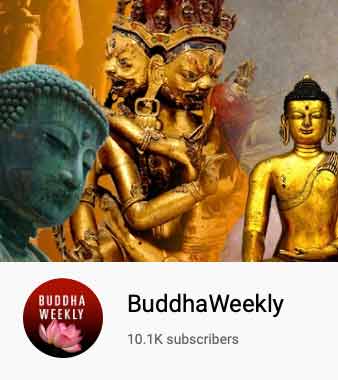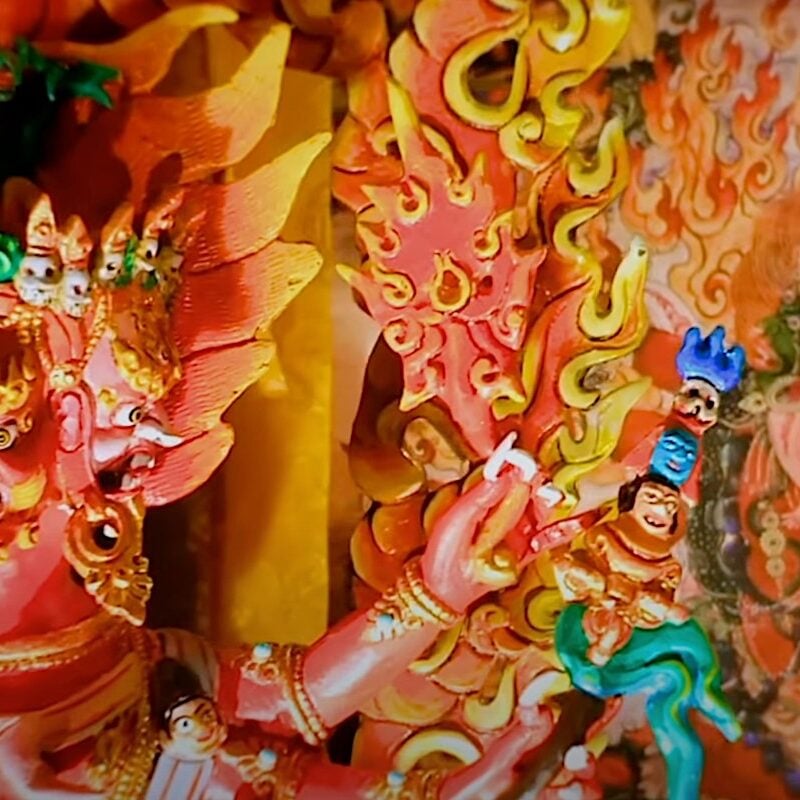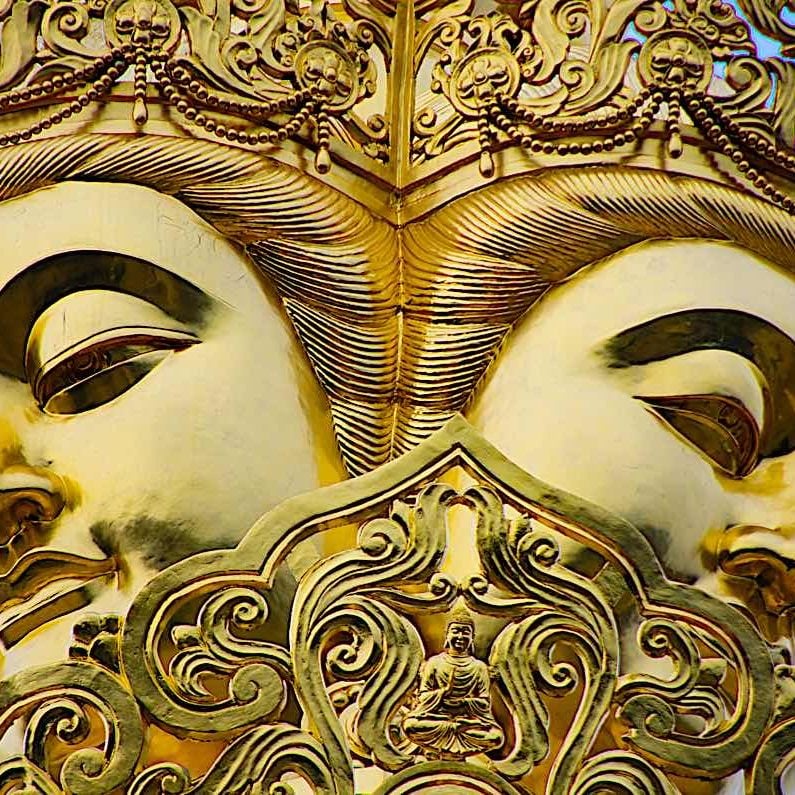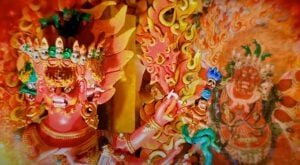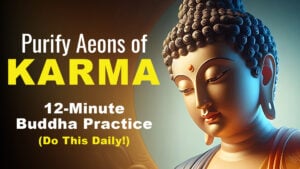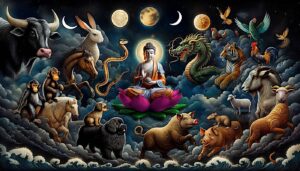Wangdu Great Cloud of Blessings: the 9 Magnetizing Activity Yidams of the Padma Buddha family: Amitabha, Kurukulla, Chenrezig, Hayagriva, Vajrayogini, Vajradharma, Padmaraja, Chakrasamvara, Guhyajnana
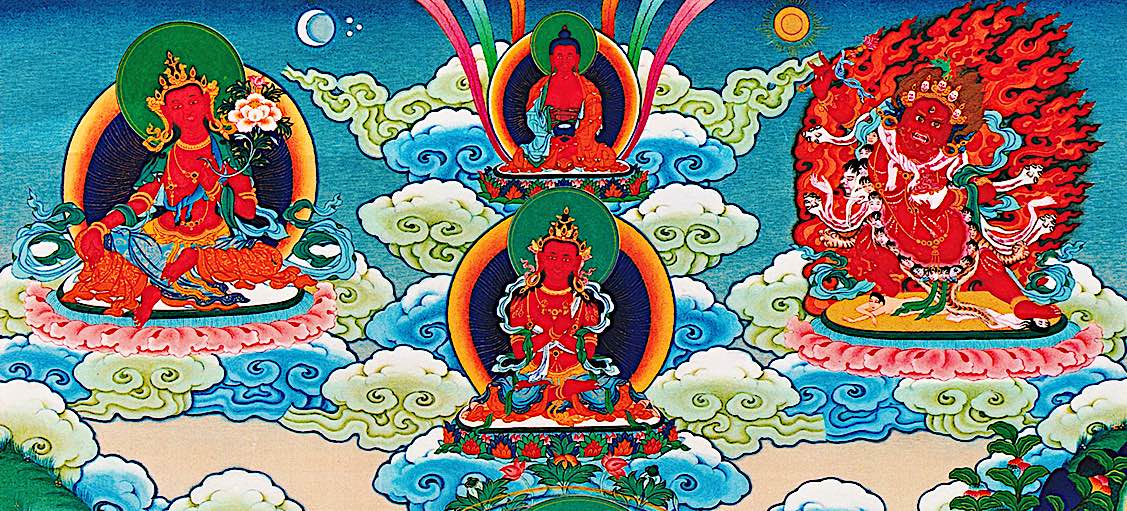
Who are the Nine Enlightened Deities of Amitabha’s Lotus Family of Buddhas? Why is their practice so important and popular in Mahayana Buddhism? What are the powerful and magnetizing benefits of the Padma Family, and especially the 9 Deities of the Cloud of Blessings? Why do many teachers say that magnetizing activity Buddhist practice is the most beneficial in this degenerate age, and especially for people new to the Dharma?
The Buddhas of the Padma family are probably the most popular in Mahayana Buddhism, especially Amitabha (Amita, Amitayus) and Avalokiteshvara (Chenrezig, Guanyin), and, of course, the Lotus Born Padmaraja (Tibetan Padma Gyalpo or Pema Gyalpo) (Lotus King manifestation of Guru Rinpoche). Many Mahayana Buddhists aspire to be reborn in the Western Pure Land of the Padma Family, known as Sukhavati. But, since all Buddha’s are ultimately of one nature, and we all have Buddha Nature, why then, are the Padma family Buddhas so appealing and widely practiced?
Khenpo Sodargye Rinpoche explains (see video below):
“For people who are new to dharma practice, the practice of magnetizing would definitely be of benefit. In this degenerate age, people have difficulty truly absorbing the Dharma because they lack inner strength; their path in learning the Dharma is filled with obstacles. If you are one of these people, by practicing magnetizing you will develop inner strength, and be able to bring the Dharma into your mind more easily. Then, no matter what kind of obstacle you encounter, you will be capable of handling it.”
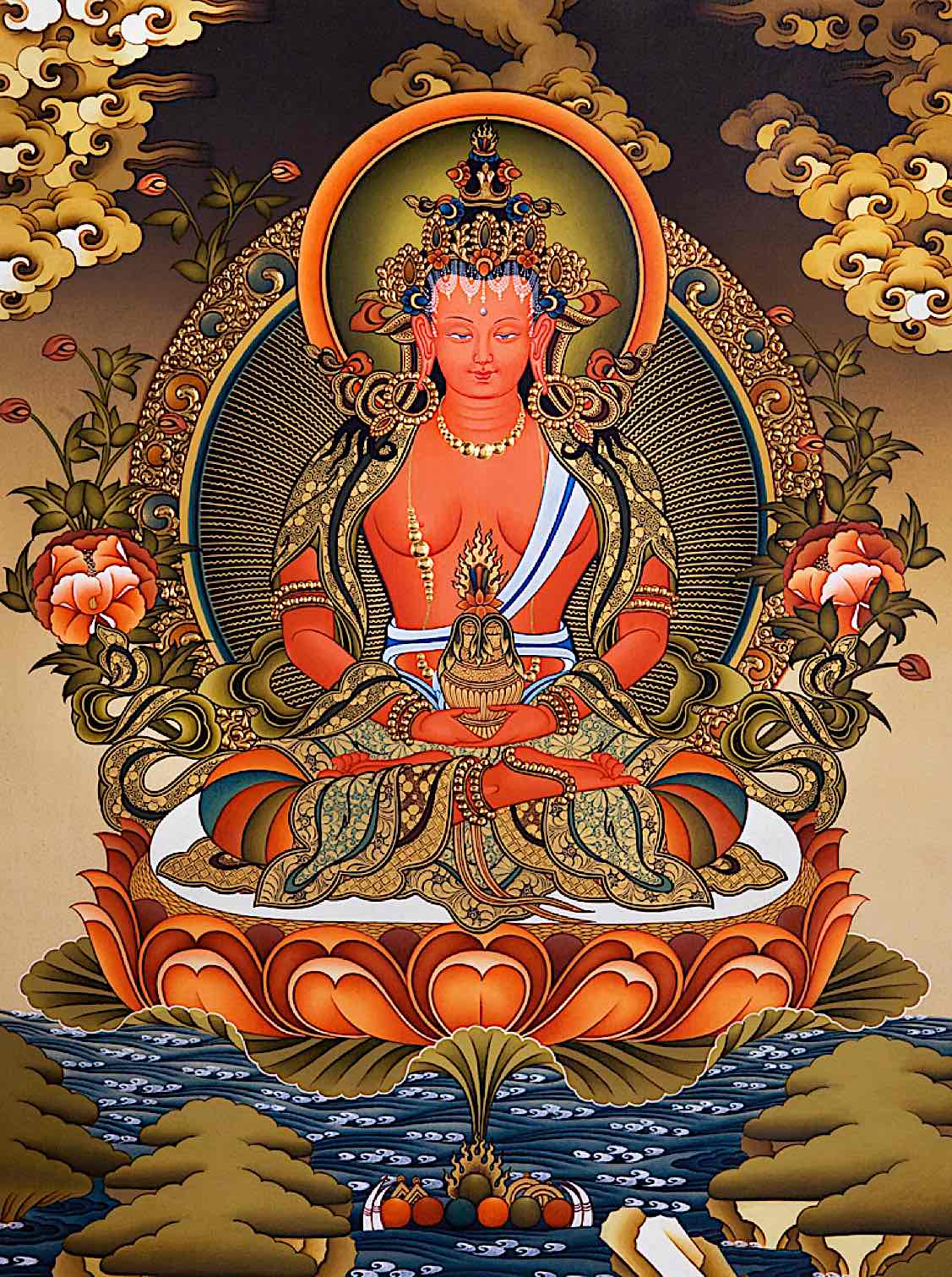
Why are we attracted to the Magnetizing Buddhas?
Many Buddhists are attracted (magnetized) to the charismatic emanations of Enlightenment of the Padma family: Amitabha, Chenrezig (Avalokiteshvara), Hayagriva, Vajravarahi, Chakrasamvara, Kurukulla, Vajradharma, Padmaraja (Lotus King aspect of Padmasambhava). It seems natural and instinctive — the nature of the magnetic personas of these great beings. In Sanskrit, magnetizing activity is called saṃgraha.
All of these can be thought of, as emanations of the compassion of the Padma family of Amitabha, and representative of “Discriminating Wisdom.” His family is also the “Speech” or Dharma family, the emanations of Dharma or Buddha’s Speech, and, it is through speech and teachings that Buddha “attracted” the Sangha to the Enlightening Path. Compassion is another aspect of the tantalizing power of the enchanting Padma (Lotus) Buddhas. One practice that concisely brings all the magnetizing Yidams together is the popular daily practice of the Wangdu.
The Wangdu prayer is a mind terma which arose in the wisdom mind of Jamgön Mipham Rinpoche. Wangdu is popular as a daily practice or prayer, as it engages the magnetizing activity the nine main Yidams of the Padma Family:
- Amitabha, Buddha of the Padma Family [For a full feature on Amitabha see>>]
- Vajradharma (the Padma Dharmakaya)
- Hayagriva, Heruka aspect of Amitabha and Avalokiteshvara [For a full feature on Hayagriva see>>]
- Red Avalokiteshvara Padmapani (Red Chenrezig) [For a full feature on Chenrezig see>> ]
- Padmaraja (Pema Gyalpo, Lotus King aspect of Padmasambhava)
- Vajravarahi Dakini
- Guhyajnana Dakini [For a full feature on Vajrayogini, see>>
- Kurukulla (Red Tara aspect) [For a full feature on Kurukulla, see>> ]
- Chakrasamvara (Dope Gyalpo is an emanation of Chakrasamvara according to Dilgo Khyentse Rinpoche and other teachers.)
The Benefits of Magnetizing with the Wangdu
According to Jamgön Mipham Rinpoche:
“Anyone who prays in this way will, without any doubt, accomplish all magnetizing activities exactly according to their wishes.”
According to teachings from Orgyen Tobgyal Rinpoche:
“There is only one way that it’s possible for people like us “to magnetize all that appears and exists”: by bringing the outer world that appears and the sentient beings who exist within the outer world under control by invoking the magnetizing deities and receiving their blessings.”
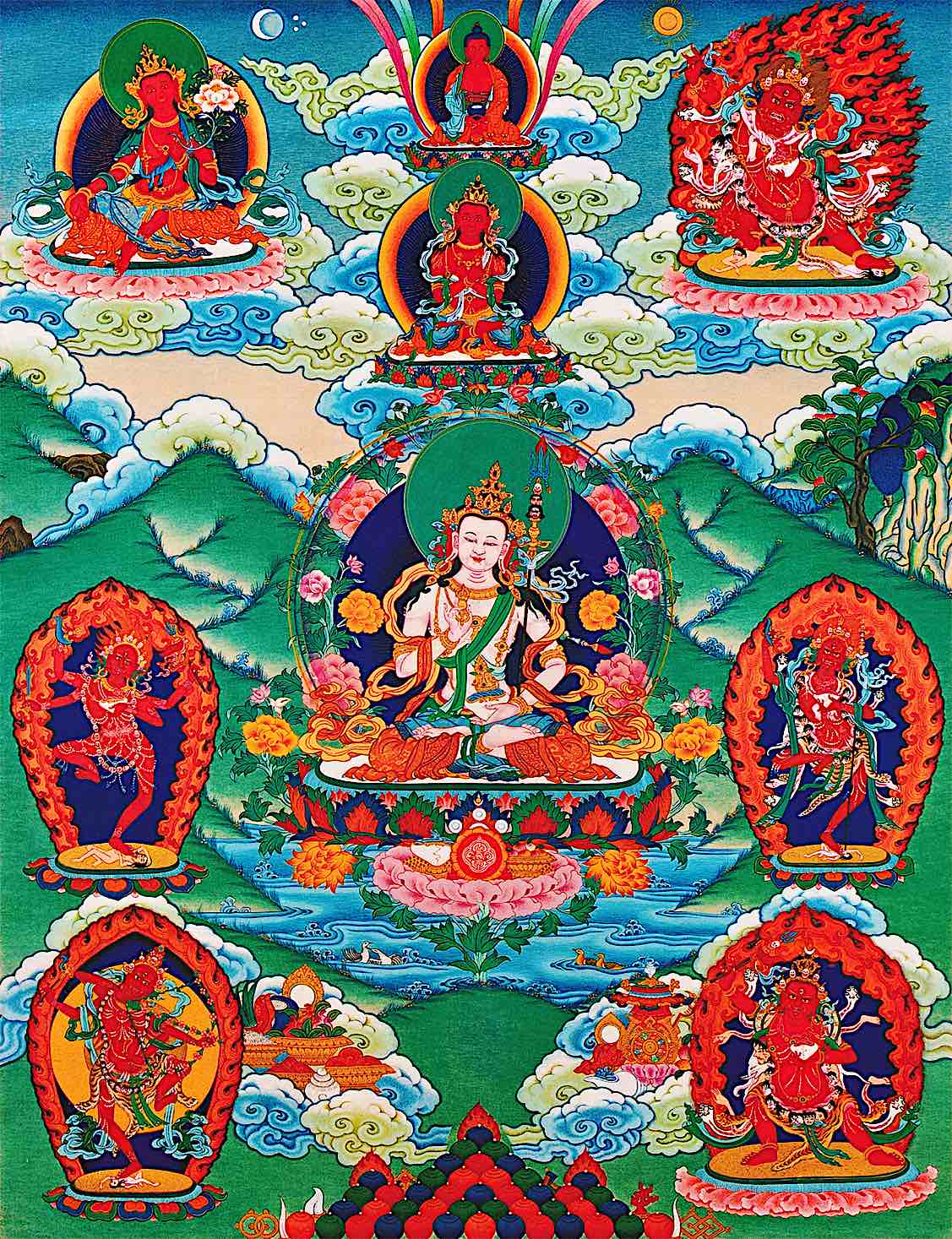
Mirror-like Awareness of Amitabha
Ultimately, all Buddhas are of one essence, but the various emanations of Enlightenment represent a skillful means. In Vajrayana, the Five Wisdom Tathagatas “are emanations and representations of the five qualities of the Buddha.” [4] Amitabha Buddha’s Family represents the wisdom of Ādarśa-jñāna, the wisdom of “Mirror-like Awareness” or discernment, or “Discriminating Wisdom.” This wisdom helps us overcome selfishness, through various methods including compassion, meditation, and speech, or Dharma. [5]
The Magnetizing deities of Amitabha’s Padma Family are usually visualized with the colour red. They are alluring, attractive, seductive, enchanting — it is the nature of their charisma. Their speech is Enlightening Nectar. Even the Heruka wrathful emanation of Amitabha — great Hayagriva — is irresistible and mesmeric, despite an awe-inspiring wrathful appearance.
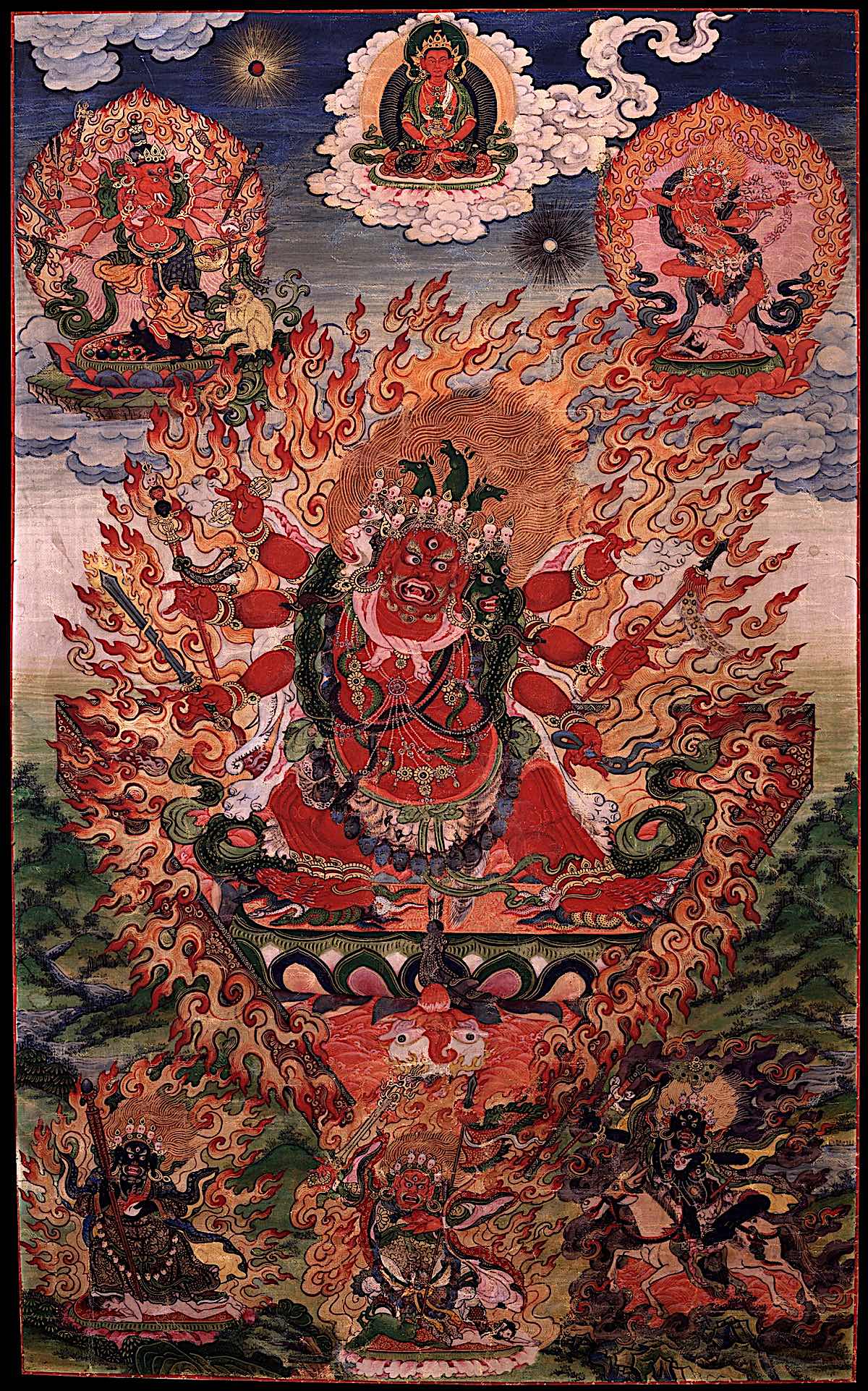
Teaching on the benefits and practice of the “Great Cloud of Blessings” Saye Institute Kyabgön Phakchok Rinpoche with Transmission of the Prayer for the purpose of accumulating a million recitations:
Red and sometimes naked: true nature of mind
Red, the color Magnetizing Padma family, is associated with both love and compassion. Avalokiteshvara (Guanyin) is literally the very face of compassion. Amitabha’s vast love for all sentient beings is all-embracing, and one of the reasons millions chant his name mantra daily. Kurukulle, a Magnetizing aspect of Tara, is often directly associated with love.
Khenpo Sodargye Rinpoche [3], in his commentary on Wangdu, explains:
“Among the nine principal magnetizing deities, apart from Amitabha, a few of the dakinis appear naked as well. From this perspective, Vajrayana is indeed the practice of those with sharp natural capacities. If a person still holds on to the notion of shame, Buddhas and Bodhisattvas merely assume graceful and majestic forms. But if a person has realized the bare naked nature of the mind, where all conceptual thoughts and attachments have ceased to exist, then Buddhas and Bodhisattvas appear in another form.”
Amitabha and Avalokiteshvara (Guan-yin, Chenrezig) — arguably the most popular Buddhas, if we take into account the huge population of Mahayana Buddhists — are attractive. Their smiling faces attract us. Their peaceful gestures and meditative equipoise are the very pictures of Buddhist Metta and Karuna (love and compassion). Their speech, the Dharma, attracts us and teaches us, and their mantras are pleasing. The entire family is charismatic, even enthralling.
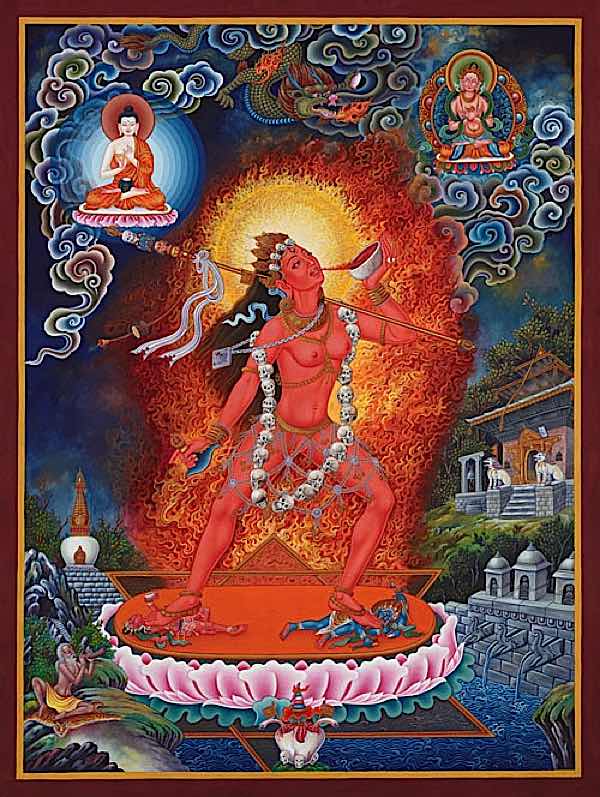
Wangdu — the Nine Yidams of the Great Cloud of Blessings
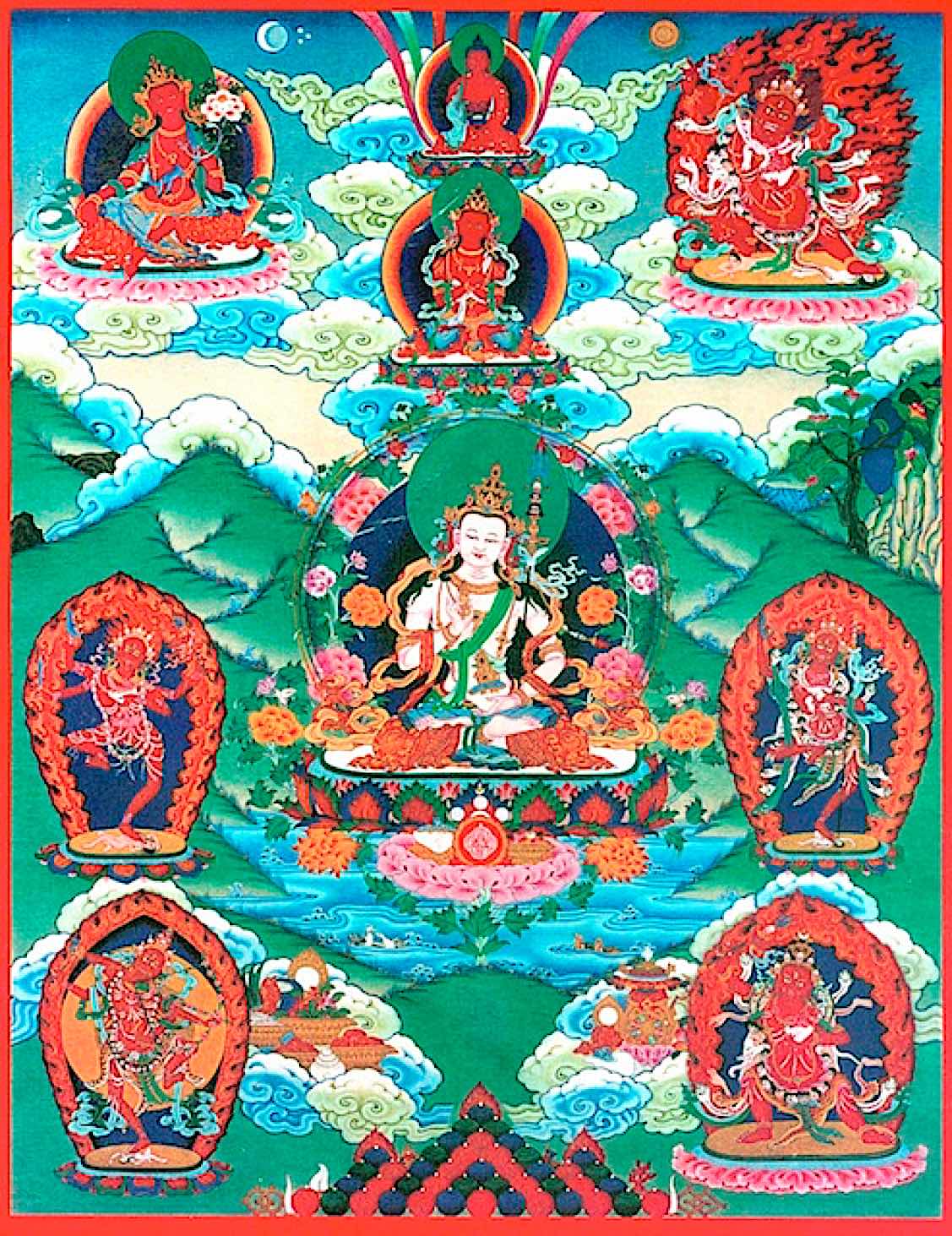
People familiar with the teachings of Mipham Rinpoche, Dilgo Khyentse Rinpoche and Khenpo Namdrol Rinpoche will recall and, perhaps, practice the Wangdu prayer, composed by Mipham Rinpoche in 1879. At one point, at Lerab Ling, Khenpo Sodargye asked the Sangha to “accumulate 10 million recitations of the Wangdu prayer — which praises the Nine Great Yidams of the Magnetizing Family. [1] [Prayer, in full, below. See the tangkha inset.]
According to Khenpo Namdro [2]:
“This prayer is called “that which brings within one’s power all that appears and all that exists’. It goes by such a name because if you make this prayer fervently, you will be able to magnetize or bring within your power the phenomena of the entire universe. This comprises both the inanimate environment and its animated inhabitants, sentient beings.”
[For Khenpo’s full commentary on Wangdu, see>>]
Video: The Great Benefits of Wang Du, featuring Khenpo
Other traditions may not have the formal framing of Wangdu, but there is no doubt that these emanations, these precious Nine Yidams, are a major focus in all traditions of Tibetan Buddhism and Mahayana (the position from the point-of-view of the Deity, not the viewer):
- Amitabha (top centre on Thangka)
- Vajradharma (immediately below Amitabha on Thangka)
- Hayagriva, Heruka aspect of Amitabha (left of Amitabha)
- Red Chenrezig Padmapani (right of Amitabha)
- Padmaraja (Tib: Pema Gyalpo, central deity — one of the eight manifestations of Padmasambhava )
- Vajravarahi (Vajrayogini) Dakini (left of Padma Gyalpo, under Hayagriva)
- Guhyajnana Dakini left of Padma Gyalpo
- Kurukulla (bottom right of Padma Gyalpo)
- Dope Gyalpo (bottom left).
Full Wangdu Prayer
As indicated by Khenpo Sodargye (above video) the Wangdu Prayer is so widely practiced it can be recited without empowerment:
“When you chant and practice Wang Dü, you can follow the instructions of the common or advanced tantric practices. Of course, uninitiated practitioners, or practitioners who are foreign to tantric practice can practice Wang Dü using the Sutrayana method. Mipham Rinpoche did not require people to strictly practice this prayer in the way of the generation or perfection stages. As long as we pray to the magnetizing deities with devotion, all animate and inanimate worlds will resonate. This will allow the essence of samsara and nirvana to be gathered into oneself.”
༄༅། །སྣང་སྲིད་དབང་དུ་སྡུད་པའི་གསོལ་འདེབས་བྱིན་རླབས་སྤྲིན་ཆེན་བཞུགས་སོ། །
Wang Dü: ‘The Great Cloud of Blessings’—The Prayer which Magnetizes All that Appears and All that Exists
by Mipham Rinpoche
ཨོཾ་ཨཱཿཧཱུྂ་ཧྲཱིཿ བདེ་ཆེན་འབར་བ་དབང་གི་ཕོ་བྲང་དུ། །
om ah hung hrih, dechen barwa wang gi podrang du
Oṃ āḥ hūṃ hrīḥ! In the palace of power, the blazing of great bliss,
བདེ་སྟོང་སོ་སོར་རྟོག་པའི་ཡེ་ཤེས་སྐུ། །
detong sosor tokpé yeshe ku
Are the embodiments of the wisdom of discernment, union of bliss and emptiness:
མ་ཆགས་བདེ་ལྡན་པདྨའི་རང་བཞིན་ལས། །
machak deden pemé rangshyin lé
Each on a lotus, its nature bliss free from all attachment,
རྡོ་རྗེ་ཉི་མ་སྣང་བ་ཆེན་པོའི་དཔལ། །
dorjé nyima nangwa chenpö pal
And the splendour of a great, illuminating vajra sun—
ཆོས་སྐུ་སྣང་བ་མཐའ་ཡས་རྡོ་རྗེ་ཆོས། །
chöku nangwa tayé dorjé chö
Dharmakāya Amitābha and Vajradharma,
འཇིག་རྟེན་དབང་ཕྱུག་ཐུགས་རྗེས་རྗེས་ཆགས་གཟུགས། །
jikten wangchuk tukjé jechak zuk
Avalokiteśvara, Lord of the World, the very manifestation of compassion,
པདྨ་རྒྱལ་པོས་འཁོར་འདས་མངའ་དབང་བསྒྱུར། །
pema gyalpö khordé ngawang gyur
Padmaraja, all of saṃsāra and nirvāṇa beneath your control,
སྣང་སྲིད་ཟིལ་གནོན་དབང་ཆེན་ཧེ་རུ་ཀ །
nangsi zilnön wangchen heruka
Hayagriva Heruka, subjugator of all that appears and exists,
གསང་བ་ཡེ་ཤེས་བཛྲ་ཝཱ་ར་ཧི། །
sangwa yeshe benza varahi
‘Secret Wisdom’ Guhyajñāna and Vajravārāhī,
བདེ་མཆོག་འདོད་པའི་རྒྱལ་པོ་བདེ་ཆེན་གཏེར། །
demchok döpé gyalpo dechen ter
Chakrasamvara, King of Desire, ecstasy supreme, source of the wisdom of great bliss,
མ་ལུས་སྐྱེ་རྒུའི་ཡིད་འཕྲོག་རིག་བྱེད་མ། །
malü kyegü yitrok rikjema
Kurukullā, who captivates the mind of every living being without exception,
མཆོག་ཐུན་ཕྱག་རྒྱའི་དབང་ཕྱུག་བདེ་སྟོང་གར། །
choktün chakgyé wangchuk detong gar
Masters and mistresses of supreme and ordinary mudrās, dancing in bliss and emptiness,
དབང་མཛད་རྡོ་རྗེ་དཔའ་བོ་ཌཱཀྐིའི་ཚོགས། །
wangdzé dorjé pawo daki tsok
Hosts of vajra ḍākas and ḍākinīs attract and magnetize.
སྣང་སྟོང་མཉམ་པ་ཆེན་པོའི་ངང་ཉིད་དུ། །
nangtong nyampa chenpö ngang nyi du
Remaining always within the state of great equality of appearance and emptiness,
རྡོ་རྗེ་སྐུ་ཡི་གར་གྱིས་སྲིད་གསུམ་གཡོ། །
dorjé ku yi gar gyi si sum yo
With the dance of your vajra body, you cause the three planes of existence to tremble;
འགག་མེད་གསུང་གི་བཞད་སྒྲས་ཁམས་གསུམ་འགུགས། །
gakmé sung gi shyé dré kham sum guk
With the sound of your laughter, your unceasing enlightened speech, you draw in the three worlds;
འོད་ཟེར་དམར་པོས་འཁོར་འདས་ཡོངས་ལ་ཁྱབ། །
özer marpö khordé yong la khyab
Rays of red light burst out to fill all of saṃsāra and nirvāṇa
སྲིད་ཞིའི་དྭངས་བཅུད་གཡོ་ཞིང་སྡུད་པར་བྱེད། །
sishyi dangchü yo shying düparjé
And cause the vital essence of conditioned existence and ultimate peace to vibrate and be gathered in.
རྡོ་རྗེ་ཆགས་པ་ཆེན་པོའི་ཐུགས་ཀྱིས་ནི། །
dorjé chakpa chenpö tuk kyi ni
With your enlightened mind of great vajra passion,
རྣམ་གཉིས་དངོས་གྲུབ་འདོད་དགུའི་མཆོག་སྩོལ་ཞིང༌། །
nam nyi ngödrub dö gü chok tsol shying
You grant the supreme of all things desired—the two kinds of siddhis;
རྡོ་རྗེ་ལྕགས་ཀྱུ་ཞགས་པ་ཆེན་པོ་ཡིས། །
dorjé chakkyu shyakpa chenpo yi
And with your great vajra hooks and lassos
སྣང་སྲིད་བདེ་བ་ཆེན་པོར་སྡོམ་བྱེད་པ། །
nangsi dewa chenpor domjepa
You bind the world of appearance and existence in great bliss.
མཐའ་ཡས་སྒྱུ་འཕྲུལ་དྲྭ་བའི་རོལ་གར་ཅན། །
tayé gyutrul drawé rolgarchen
Dancers in the play of the limitless net of illusion,
ཏིལ་གྱི་གོང་བུ་ཕྱེ་བ་བཞིན་བཞུགས་པའི། །
til gyi gongbu chewa shyin shyukpé
Who fill space to overflowing, like a vast outpouring of sesame seeds,
རབ་འབྱམས་རྩ་གསུམ་དབང་གི་ལྷ་ཚོགས་ལ། །
rabjam tsa sum wang gi lhatsok la
Vast array of the Three Roots, hosts of magnetizing deities,
གུས་པས་གསོལ་བ་འདེབས་སོ་བྱིན་གྱིས་རློབས། །
güpé solwa deb so jingyi lob
In devotion we pray to you: inspire us with your blessings,
མཆོག་ཐུན་དངོས་གྲུབ་འདོད་དགུའི་དཔལ་མཐའ་དག །
choktün ngödrub dö gü pal tadak
Grant us attainments, ordinary and supreme, and so the siddhi
ཐོགས་མེད་དབང་དུ་བྱེད་པའི་དངོས་གྲུབ་སྩོལ། །
tokmé wang du jepé ngödrub tsol
Of magnetizing, without obstruction, whatever we desire!
ཅེས་པའང་རབ་ཚེས་ས་ཡོས་ཟླ་ ༧ ཚེས་ ༡ ལ་དྷཱིཿམིང་པས་སྤེལ་བ། གསོལ་བ་བཏབ་ན་གང་ཟག་སུ་ཡང་རུང་སྟེ་དབང་གི་ལས་ཀུན་ཇི་ལྟར་བསམ་པ་བཞིན་འགྲུབ་པར་གདོན་མི་ཟའོ། །དར་དམར་ལ་བྲིས་ཏེ་ཕྱར་བའམ། མེ་རླུང་ལ་འཁོར་ལོ་བྱས་ཀྱང་འགྲུབ་བོ། །མངྒ་ལཾ། །
NOTE: This was composed on the first day of the seventh month of the Earth Hare year (1879) by one named Dhīḥ. Anyone who prays in this way will, without any doubt, accomplish all magnetizing activities exactly according to their wishes. This prayer may be written on red flags and flown in the air, or used in prayer wheels powered by heat or wind. Mangalaṃ!
NOTES
[1] Wangdu: the Prayer Which Magnetizes all the Appears and all that Exists>>
https://all-otr.org/vajrayana/42-wangdu-the-prayer-which-magnetizes-all-that-appears-and-all-that-exists
[2] Khenpo Namdrol, Commentary on the Wang Dü prayer, 1998, Rigpa.
[3] Khenpo Sodargye “The Magnetizing Deities”
https://khenposodargye.org/teachings/khenpos-teachings/wang-du-great-cloud-blessings/
[4] Williams, Wynne, Tribe; Buddhist Thought: A Complete Introduction to the Indian Tradition, page 210.
[5] The Five Tathagatas https://en.wikipedia.org/wiki/Five_Tathagatas
More articles by this author
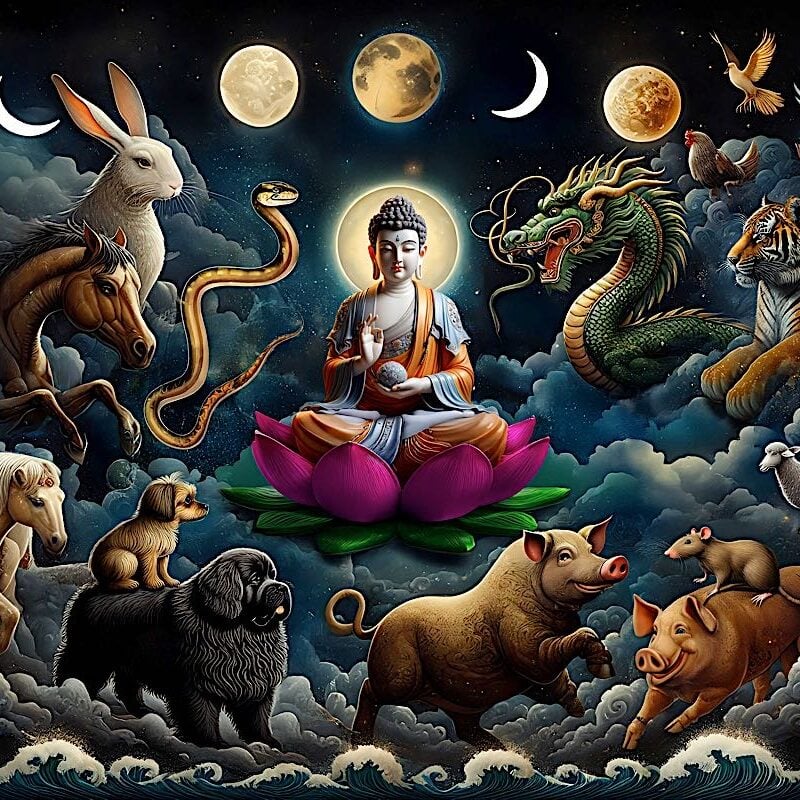
Who is my Enlightened Life Protector Based on Tibetan Animal Sign Zodiac in Buddhism? According to Mewa, Mahayana tradition and Kalachakra-based astrology (with Mantra Videos!)

Buddha’s Enlightened Journey: An In-Depth Illustrated Timeline of Shakyamuni Gautama’s Life from 563 BCE to 483 BCE
Search
Latest Features
Please support the "Spread the Dharma" mission as one of our heroic Dharma Supporting Members, or with a one-time donation.
Please Help Support the “Spread the Dharma” Mission!
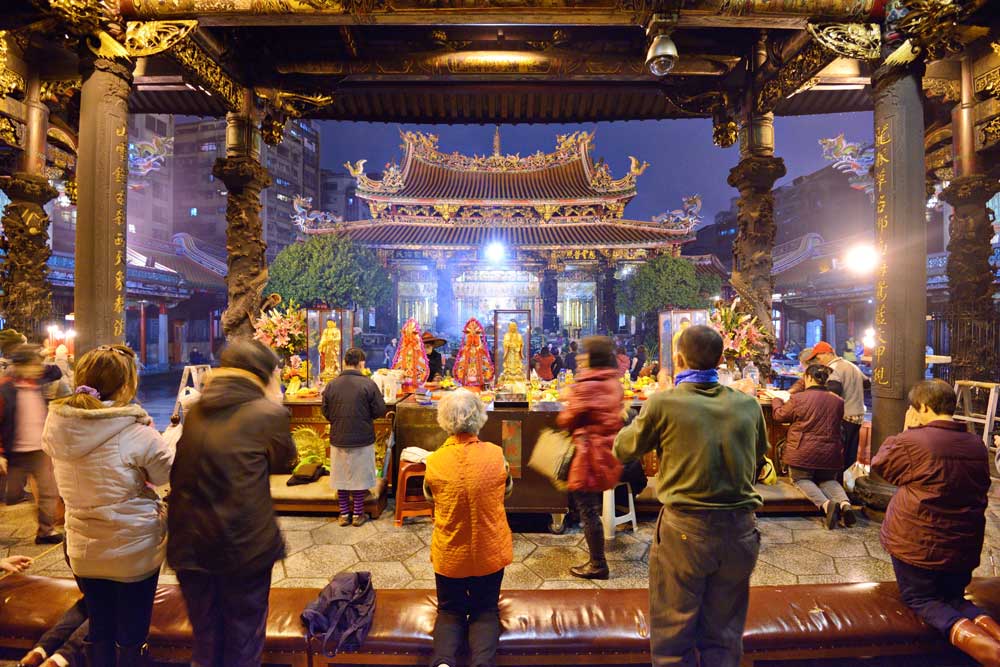
Be a part of the noble mission as a supporting member or a patron, or a volunteer contributor of content.
The power of Dharma to help sentient beings, in part, lies in ensuring access to Buddha’s precious Dharma — the mission of Buddha Weekly. We can’t do it without you!
A non-profit association since 2007, Buddha Weekly published many feature articles, videos, and, podcasts. Please consider supporting the mission to preserve and “Spread the Dharma." Your support as either a patron or a supporting member helps defray the high costs of producing quality Dharma content. Thank you! Learn more here, or become one of our super karma heroes on Patreon.
Lee Kane
Author | Buddha Weekly
Lee Kane is the editor of Buddha Weekly, since 2007. His main focuses as a writer are mindfulness techniques, meditation, Dharma and Sutra commentaries, Buddhist practices, international perspectives and traditions, Vajrayana, Mahayana, Zen. He also covers various events.
Lee also contributes as a writer to various other online magazines and blogs.
